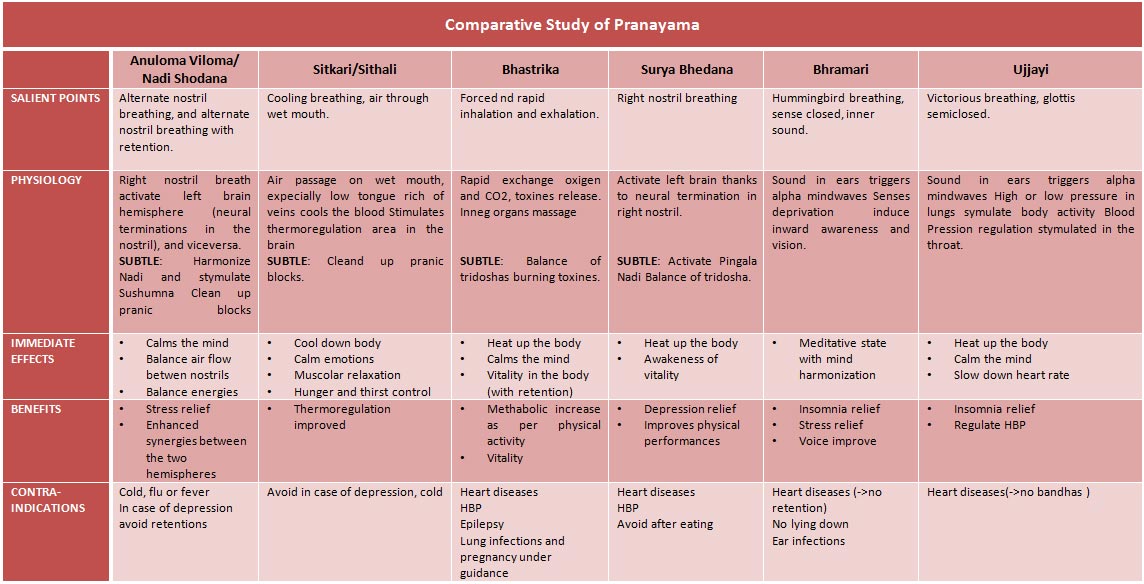The sustained practice of pranayama with all necessary preparations brings numerous health benefits. Few of them are as follows.
1. Improves digestion: The rhythmic massage during pranayama on the abdominal muscles and diaphragm improves the efficiency in digestive organs contributing for better absorption and assimilation of the nutrients.
2. The reduction of impurities brings the purification of the mind and body.
3. One - pointedness developed on account purified mental essence helps to enhance the concentration, memory, attention and other cognitive abilities
4. Increases lung capacity, this is helpful for the exchange of the gases.
5. Brings balance in the disorders in Dosha and Dhatus of the body resulting in the good health.
6. Enhances the vital energy of the practitioners which is helpful for dynamism.
7. It develops the stable autonomic nervous system with slight dominance of parasympathetic activity.
8. Effective in relaxation of mind and emotions as well as stress management.
9. Improved blood circulation in the practice harmonizes the functions of the endocrinal and biochemical secretions.
10. Stimulates the metabolism.
11. Therapeutically useful in the treatment of the diseases like mood swings, depression, insomnia, hypertension, cough, cold and other respiratory disorders
12. It is the preparation for the higher Yoga practices such as concentration and meditation techniques.


